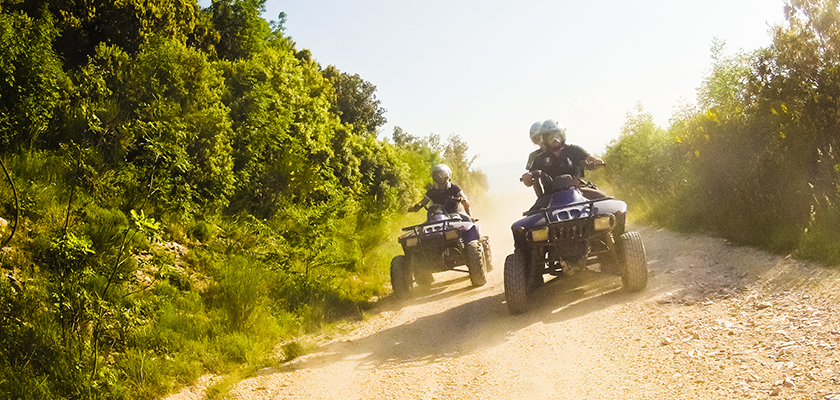ATV Injury Cases Triple Prompting Safety Warning
Posted June 30, 2020
All-Terrain Vehicles (ATVs) are a popular recreational activity and they can be a useful tool for those who own large areas of land or farms, however the UVM Medical Center reports a threefold increase in ATV-related injuries in the Emergency Department this season. As schedules and routines have changed during the COVID-19 pandemic, and people are spending more time recreating outside and trying new activities.
Every year we see patients brought into our trauma centers for ATV-related injuries. While 1 in 4 injuries has been a child or teen, most of the injuries are adults who have been riding for years.
Even if you and your family have ATVs and have never been hurt, take the time to regularly review safety information, because it only takes one incident to change or end a life.
Fit the ATV to the Rider
Most ATVs are designed for a single rider, though some are designed to carry a passenger. If riding a two-person ATV, ensure that both individuals are old enough to safely ride and are wearing the proper safety equipment. ATVs come in different sizes so they can be safely ridden and controlled by their user. Children should never drive a full-size ATV.
Always Wear a Helmet
About 75 percent of ATV-related injuries we saw at UVM Medical Center in the last two years were individuals who were not wearing helmets. Wearing a DOT-compliant, properly fitted helmet, is critical to safe ATV use. If you are in a crash of any sort, even if your helmet appears intact you need to replace the helmet.
Know Where You Are Riding
There are public ATV trails in our region, such as VASA trails in Vermont. Please note, helmets are required on all VASA trails. In New York state, public trails are limited but the Trailpass ATV and Dirtbike Network offers members access to three riding areas in the state. If you are riding on private trails or on private property, check for hazards and risks such as laundry lines, cables blocking off trails, or ditches. Doing a safety check every spring after the snow melts and periodically throughout the summer can keep all riders safer.
The only time an ATV should be on a road is to cross it. Cross the road in locations where it is safe to do so and you have good visibility of oncoming traffic from both directions.
Supervise Young Riders
ATVs may be fun to ride, but they are complex, sometimes dangerous, machines. The American Academy of Pediatrics recommends that children who are too young to have a driver's license not be allowed to operate or ride off-road vehicles. If you do choose to allow a child under the age of 16 to drive or ride, they should always be supervised by an adult and should only use an ATV that is properly sized for them. The supervising adult can ensure that helmets are worn at all times and that safe driving behaviors are practiced.
Dress for Safety
Besides a properly fitted helmet, riders should wear long pants, over-the-ankle boots, long sleeves, gloves, and goggles. Clothing should be well-fitted to limit the risk of it catching on surfaces or objects.
Take a Safety Class
Whether you are new to ATVs or have been riding them for decades, it is always a good idea to take a safety course. You may learn new and important safety information. There are ATV safety courses available online or in-person for all ages.
Stay Alert, Stay Connected
Whenever you use an ATV, take a fully charged cell phone with you and ensure that all riders are clear headed so that you can respond quickly if an emergency occurs. If an individual is injured while using an ATV, seek professional medical guidance or call 9-1-1 if it is an emergency.
Abby Beerman is an injury prevention coordinator at University of Vermont Medical Center and UVM Children's Hospital.










